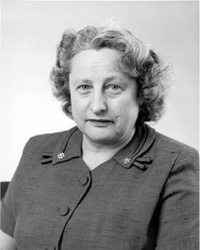Dr. Adele Turzillo (left) and Dr. Cheng-I Wei (right) present Dr. Daniel Drucker (center) with the 2024 Mary Shorb Lecture in Nutrition plaque following his presentation.
Image Credit: Jonathan Stephanoff
Ozembic. Wegovy. Trulicity. These and other similar medications are becoming commonly known and prescribed to treat diabetes, obesity, cardiovascular diseases, some liver conditions, and the list keeps growing. What may seem like “miracle” drugs have been built on decades of gut research into GLP-1 and GLP-2 hormone therapies.
On Tuesday, December 10, the 2024 Mary Shorb Lecture in Nutrition was jointly presented by the departments of Animal and Avian Sciences and Nutrition and Food Science with the keynote titled “Transformative gut hormone therapies for cardiometabolic disorders” presented by Dr. Daniel Drucker, MD, FRCPC.
Dr. Drucker has been at the forefront of GLP-1 and GLP-2 hormone receptor research for decades. He is a professor in the Department of Medicine at the University of Toronto and Senior Scientist at the Lunenfeld-Tanenbaum Research Institute, Mt. Sinai Hospital. He is an endocrinologist who’s lab studies the molecular biology and physiology of the glucagon-like peptides. His discoveries have enabled development of several new GLP-1-based therapies for the treatment of diabetes and obesity, and GLP-2 analogues for intestinal failure.
In the early days of his work they first discovered the metabolic effects of GLP-1 receptors through genetic knockout mice. Years of experiments and safety trials followed, and the first human medication was approved in 2005. The past 20 years have seen further development of medications and also research into longer term health effects. While GLP-1 hormone therapies have been shown to stabilize blood sugar they also shown a 20 percent decrease in cardiovascular disease and kidney failure deaths than controlling blood sugar or weight loss alone can account for.
More current research has shown GLP-1 effects on treating inflammation within the gut and throughout the whole body including as an effective treatment for certain types of liver disease. Future research Dr. Drucker sees on the horizon is activating or halting other hormone receptors in combination with GLP-1. Additional development involves pill forms of these medications with simpler production and no need of refrigeration, allowing for greater supply at lower cost.
 The Lecture series is named for Mary Shaw Shorb who received her B.S. in Biology from the College of Idaho (1928) and her Sc.D. in Immunology from Johns Hopkins University (1933). In 1942, she took her first research position at the Bureau of Home Economics and Human Nutrition of the USDA at Beltsville. Two years later, she transferred to the Bureau of Dairy Industry (USDA) where she was tasked with culturing Lactobacillus lactis Dorner (LDD), which was being used to make various fermented Dairy products. The media used to grow LDD required liver extract, which led Dr. Shorb to hypothesize that LDD could be used as a rapid biological assay to identify the anti-pernicious anemia factor identified in liver, for which Minot and Murphy shared the 1934 Nobel Prize in medicine.
The Lecture series is named for Mary Shaw Shorb who received her B.S. in Biology from the College of Idaho (1928) and her Sc.D. in Immunology from Johns Hopkins University (1933). In 1942, she took her first research position at the Bureau of Home Economics and Human Nutrition of the USDA at Beltsville. Two years later, she transferred to the Bureau of Dairy Industry (USDA) where she was tasked with culturing Lactobacillus lactis Dorner (LDD), which was being used to make various fermented Dairy products. The media used to grow LDD required liver extract, which led Dr. Shorb to hypothesize that LDD could be used as a rapid biological assay to identify the anti-pernicious anemia factor identified in liver, for which Minot and Murphy shared the 1934 Nobel Prize in medicine.
After being bumped from her position at USDA in 1946 by the returning veteran who had held the position prior to the war, Dr. Shorb was given laboratory space and an unpaid appointment in the Poultry Husbandry Department of the University of Maryland. With an initial grant from Merck & Company, she developed an LDD bioassay to quantify the concentration of anti-pernicious factor in liver extracts. This assay allowed her collaborators at Merck & Company to rapidly purify and crystalize the substance they named vitamin B-12, which was rapidly proven to be therapeutically effective for pernicious anemia. She and her collaborator, Dr. Karl Folkers (Merck) were corecipients of the Mead-Johnson Award of the American Institute of Nutrition in 1949 for this work. In 1970, two years before Dr. Shorb’s retirement from the University of Maryland, Merck & Company donated $10,000 to establish a Shorb Lectureship in Nutrition to honor and perpetuate her legacy.